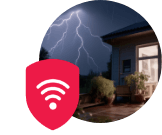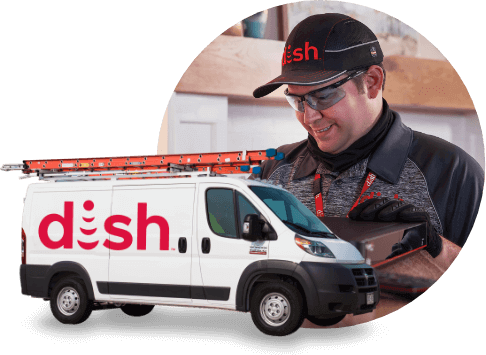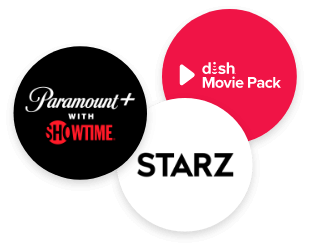Congratulations, you qualify for deals on DISH TV plus Internet in your area!
Please contact one of our specialists to get you aligned with the best plan to fit your needs today.

Exclusive Offers for Our Heroes!
DISH honors those aged 55+, Educators, Healthcare Professionals, First Responders, and Military Members with special perks:
- Enjoy a free monthly movie rental - a $165 yearly gift.
- Receive the Stars & Stripes Pack - saving $240 over two years.
- Get the Heartland Pack on us - a $144 bonus.
- Plus, upgrade to our Hopper DVR for mobile streaming of your full TV lineup at no extra charge!
Congratulations, you qualify for deals on DISH TV plus Internet in !
Please contact one of our specialists to get you aligned with the best plan to fit your needs today.

Special Offers for our Heroes

Signal Reliability Guarantee

The DISH Voice Remote

Next-Day Installation

Included for 3 Months

Hopper 3 DVR
Thank you for being a valued DISH customer! X
Interested In Saving on Wireless Service?
Introducing Republic Wireless
Our new wireless service
Save $10/mo. on two lines when you bundle Republic with DISH*
Only $50 /mo.
For two lines when bundled with DISH
- Unlimited talk, text & data
- 10GB mobile hotspot
- WiFi calling
- Unlimited international texting
- No contracts, hidden fees or surprise data overages charges
Start saving on wireless today!
AutoPay required. Taxes not included. Everything You Want members using over 20GB/mo of data and Everywhere You Go members using over 35GB/mo of data will have their speeds reduced. 5G service requires a 5G capable device. 5G not available in all areas. Mobile hotspot data usage counts toward monthly data allotment. *Subscribe to any DISH television package and save $5/mo. per line on the Everything You Want or Everywhere You Go plans. Discount ends if you cancel DISH service.

Interested In Saving on High-Speed Internet?
We work with the top Internet providers nationwide, and our specialists will ensure you’ll find the speed you need at the best available rate.
Start saving a bundle today!

Want to make changes to your DISH account?
Please select from the following options:
Please select from the
following options:
following options:
¡Gracias por ser un valioso cliente de DISH! X
¿Interesado en ahorrar en el servicio inalámbrico?
Presentamos Republic Wireless
Nuestro nuevo servicio inalámbrico
Ahorra $10/mes en dos líneas cuando combinas Republic con DISH*
Solo $50 /mes
Para dos líneas cuando se combinan con DISH
- Llamadas, mensajes y datos ilimitados
- 10GB de hotspot móvil
- Llamadas por WiFi
- Mensajes de texto internacionales ilimitados
- Sin contratos, tarifas ocultas o cargos sorpresa por exceso de datos
¡Empieza a ahorrar en servicio inalámbrico hoy!
Se requiere AutoPay. Impuestos no incluidos. Los miembros de Everything You Want que usen más de 20GB/mes de datos y los miembros de Everywhere You Go que usen más de 35GB/mes tendrán reducidas sus velocidades. El servicio 5G requiere un dispositivo compatible con 5G. 5G no disponible en todas las áreas. El uso de datos de hotspot móvil cuenta para la asignación mensual de datos. *Suscríbete a cualquier paquete de televisión de DISH y ahorra $5/mes por línea en los planes Everything You Want o Everywhere You Go. El descuento termina si cancelas el servicio de DISH.

¿Interesado en ahorrar en Internet de alta velocidad?
Trabajamos con los mejores proveedores de Internet a nivel nacional, y nuestros especialistas se asegurarán de que encuentres la velocidad que necesitas al mejor precio disponible.
¡Empieza a ahorrar hoy mismo!

¿Quieres hacer cambios en tu cuenta DISH?
Por favor, selecciona entre las siguientes opciones:
Por favor, selecciona entre las
siguientes opciones:
siguientes opciones:
 Call
Call  Access Your Account
Access Your Account